- Home
- /
- Articles
- /
- Guitar Setups
- /
- How to Adjust Truss...
What Is a Truss Rod?
A truss rod is a steel rod that runs down the interior of the guitar neck. Its purpose is to counteract the pull of the strings by applying a counterforce within the neck. Furthermore, the truss rod allows adjustment of neck relief (or bow) in relation to how much tension is being applied to the neck. Neck relief refers to how much bow is in the neck- which is measurable.
Typically, a guitar neck needs adjustment after changing tuning or string gauge. Additionally, the neck may need adjustment any time after the guitar has been subjected to temperature or humidity fluctuations (typical seasonal changes).
These images show various locations for the truss rod adjustment nut. With heel area truss rod access, you may need to unscrew and remove the neck completely to access it. Many nylon string guitars do not have a truss rod, because they do not withstand the same kind of neck tension as steel-string guitars.
Step 1: Check Neck Relief (Bow)
Check the amount of relief or bow in the neck and determine if any adjustment is needed. Most players feel that a near-straight neck is the most comfortable to play on, but this is subject to personal preference. Usually, there should be a small amount of relief in the neck for optimal playing, about the thickness of a business card or less.
What You Will Need
- The guitars’ truss rod adjustment key
- A capo
- Automotive feeler gauges or a string action ruler (if you want to measure your results)
How to Check Neck Relief (Bow)?
Capo the first fret. If you do not own a capo, you can use your fretting hand to bar the first fret (or you can alternatively use a long straight edge across the length of the neck). With your picking hand, bar or press down the string as follows: If you have a bolt-on neck, bar the last fret on the #6 string (lowest string). If you have a set-neck (glued in), bar the fret closest to where the neck and body meet, typically the 17th-19th fret. When checking an acoustic guitar, bar the fret closest to where the neck and body meet (often the 14th fret).
Find the centre between those two reference points (it is often the 7th or 8th fret on an electric guitar). Observe the distance between the top of the fret and the bottom of the string, as pictured. Notice the gap, if any. If you have a gap, you likely have some bow in the neck. The amount of gap is the amount of neck relief. If there is no gap, the neck is likely either dead straight or back-bowed. Check these measurements with the guitar in the playing position.
You can measure the amount of relief using a string action ruler or set of automotive feeler gauges. If you don’t have these tools, you can use a business card or string package for reference. For the technically minded, try setting the relief to .008″-.010″ for most electrics, .010″-.012″ for acoustics, and .015″-.020″ for basses (check out the Guitar Setup Calculator for many more examples).
How Much Neck Relief?
Step 2: Adust the Truss Rod
Adjust the truss rod to affect the amount of neck relief. To tighten the truss rod and straighten the neck, turn clockwise. To loosen and allow more bow, turn counter-clockwise. Keep in mind, a little goes a long way. Make your adjustments ¼ turn at a time (or less) and check the results. A straighter neck will generally feel more comfortable but may produce some unwanted string buzz if too straight. Experiment and see what will work best for you, your guitar, the string gauge, tuning, and your playing style. See the suggestions below.
General Neck Relief Suggestions for Guitar
Neck Radius | Relief |
7.25″ | .012″ (0.3 mm) |
9.5″ to 12″ | .010″ (0.25 mm) |
15″ to 17″ | .008″ (0.2 mm) |
General Neck Relief Suggestions for Bass
Neck Radius | Relief |
7.25″ | .014″ (0.35 mm) |
9.5″ to 12″ | .012″ (0.3 mm) |
15″ to 17″ | .010″ (0.25 mm) |


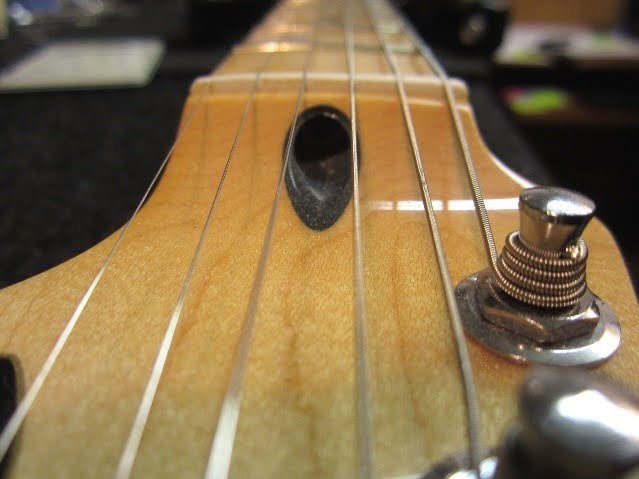
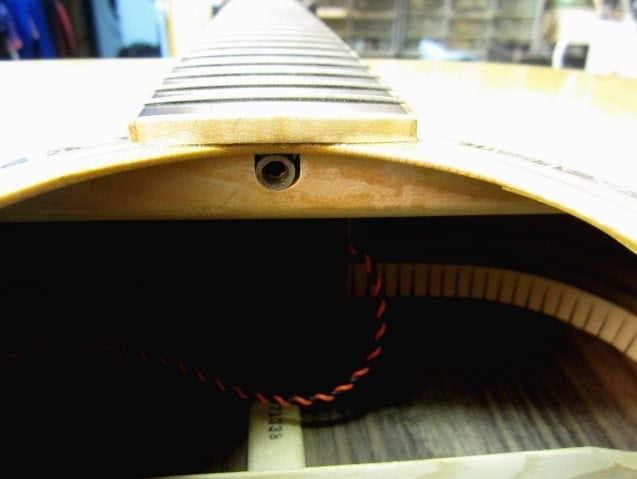
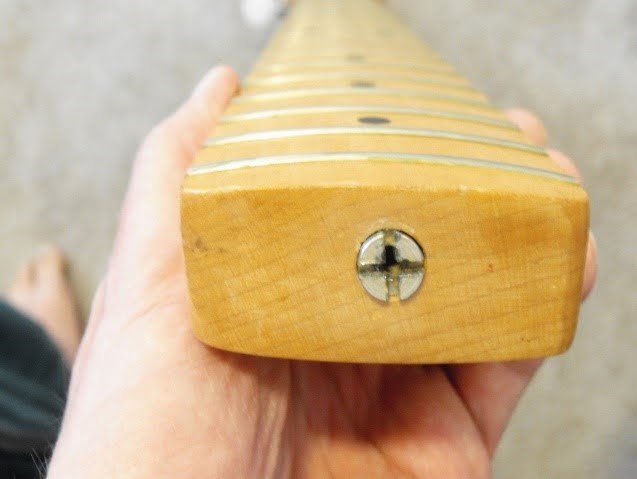
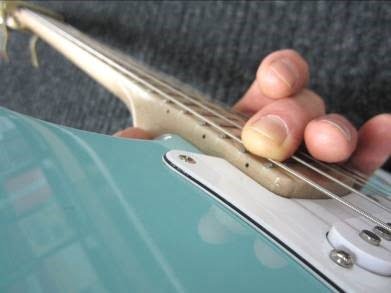
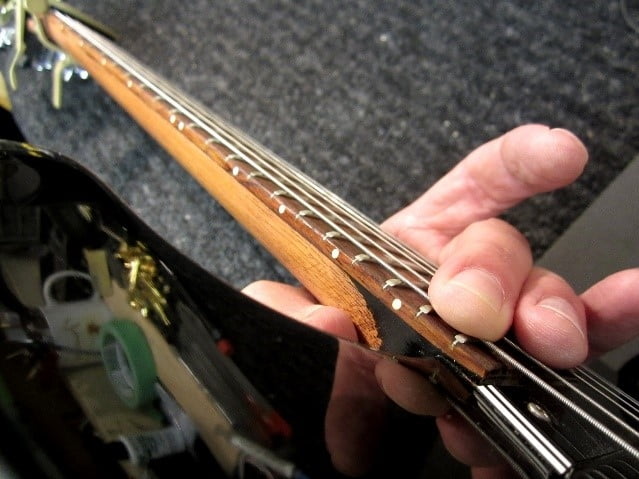
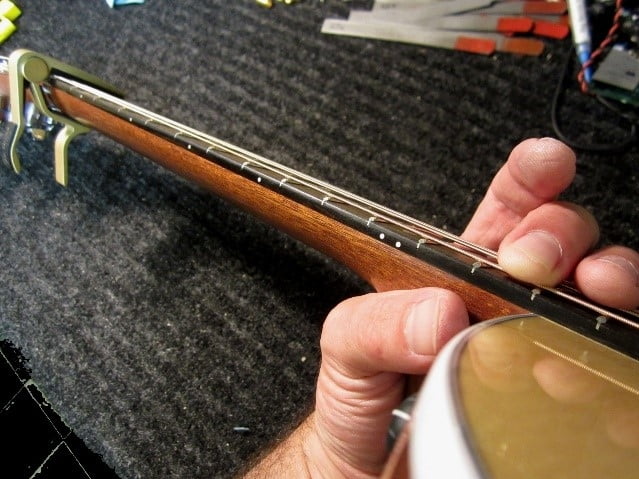
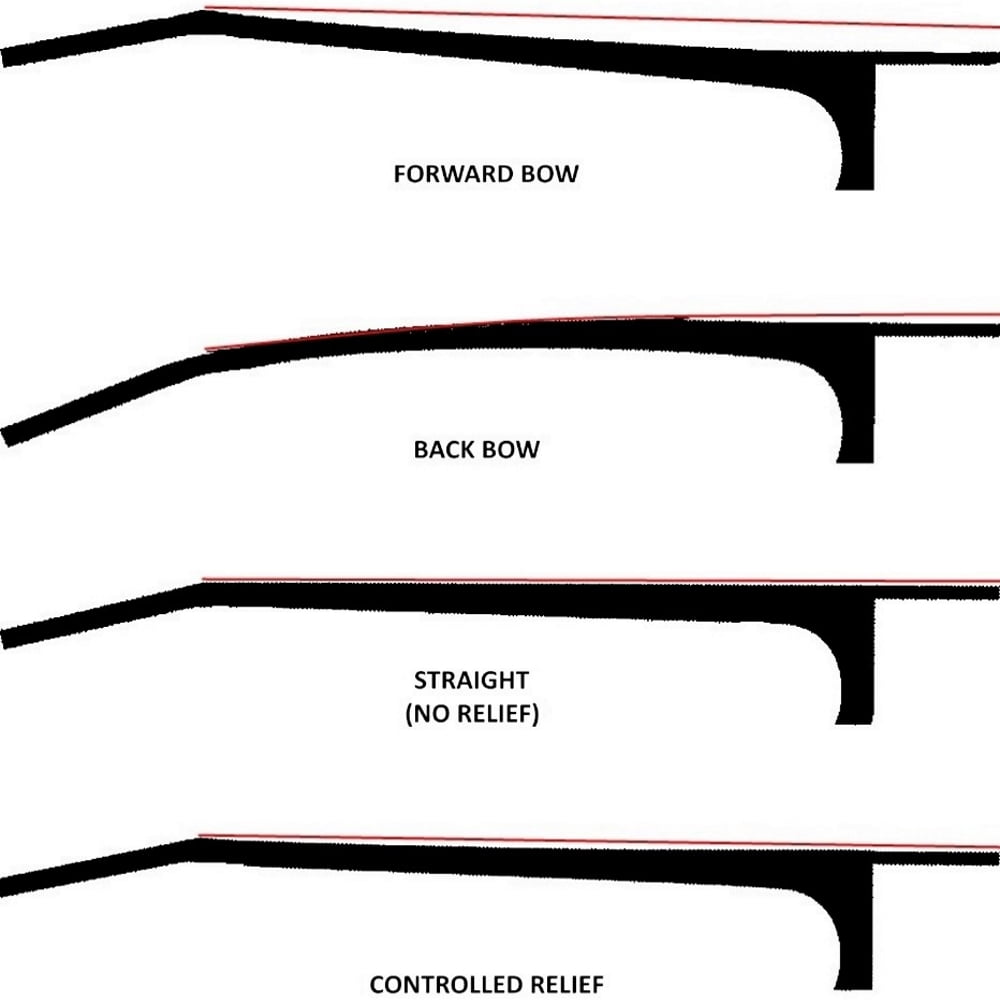
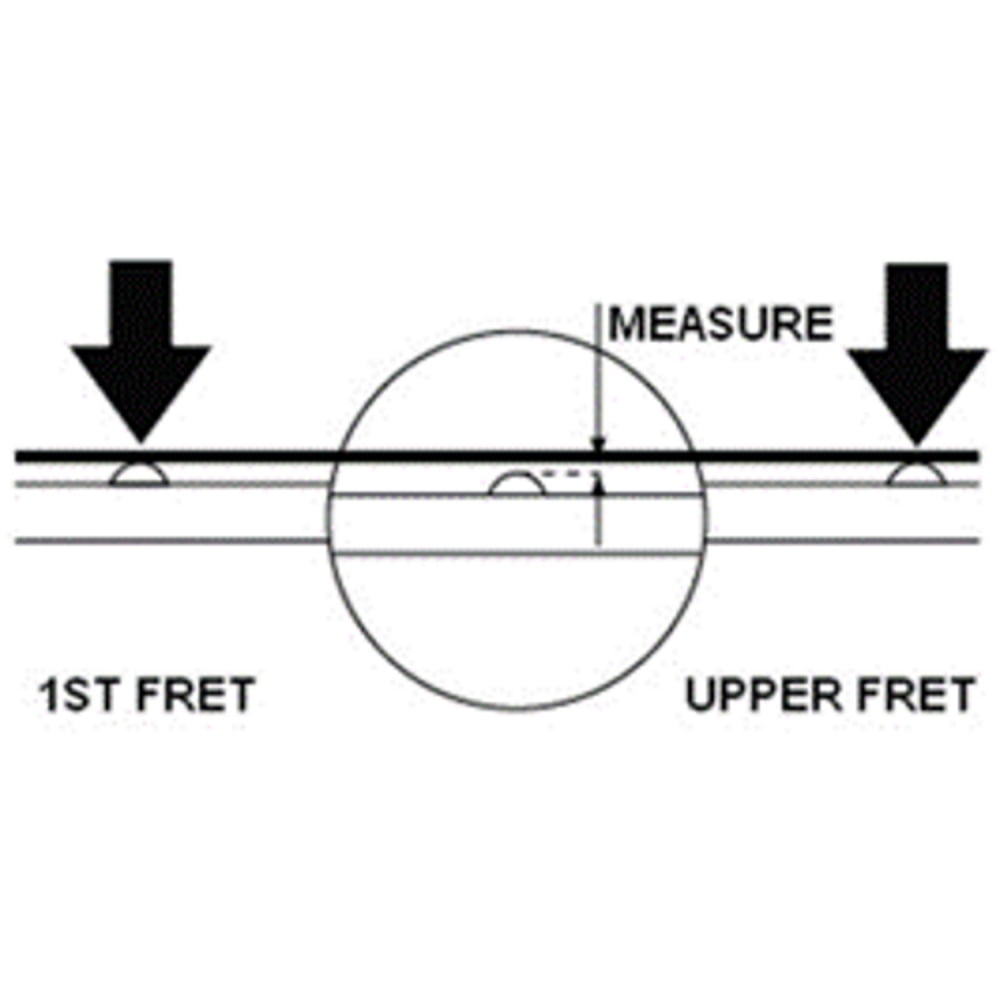
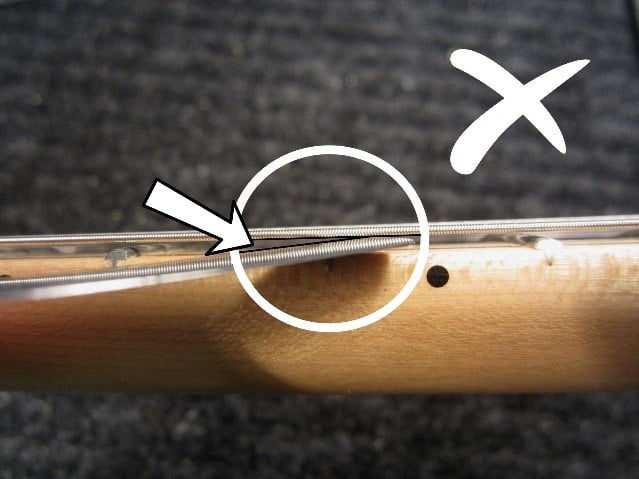
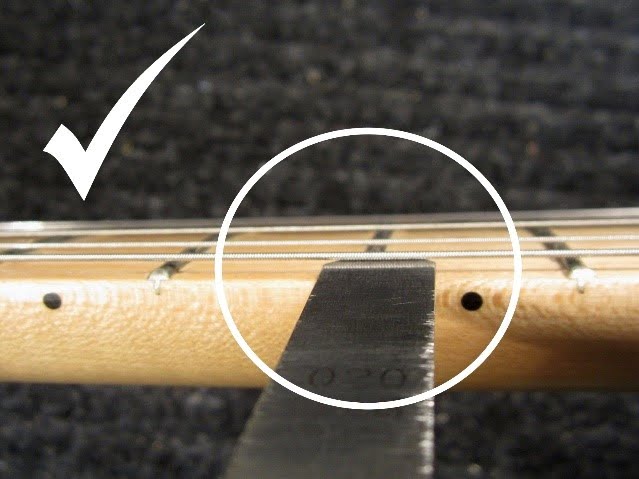
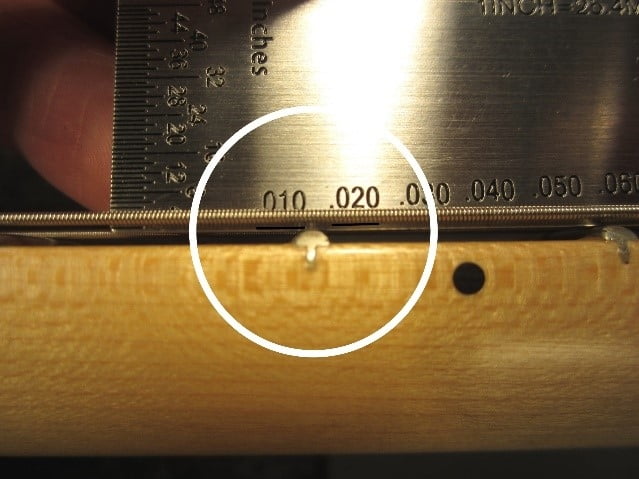
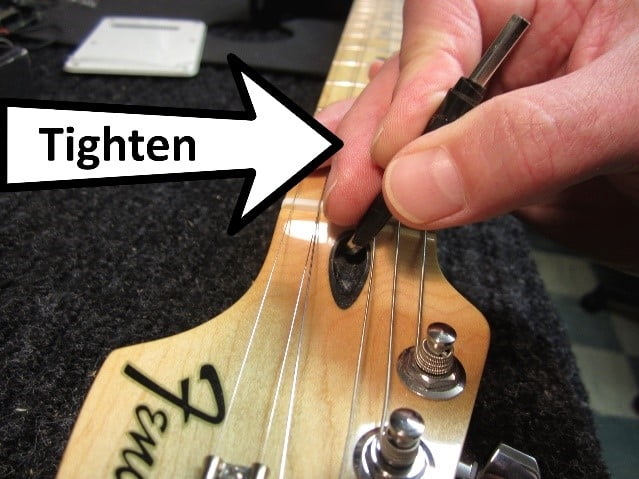
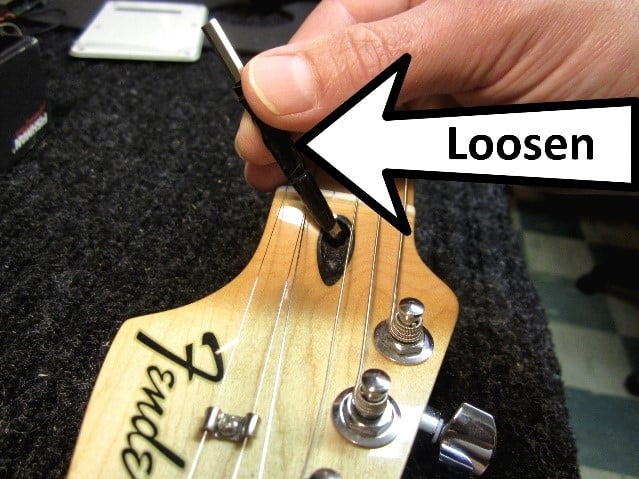
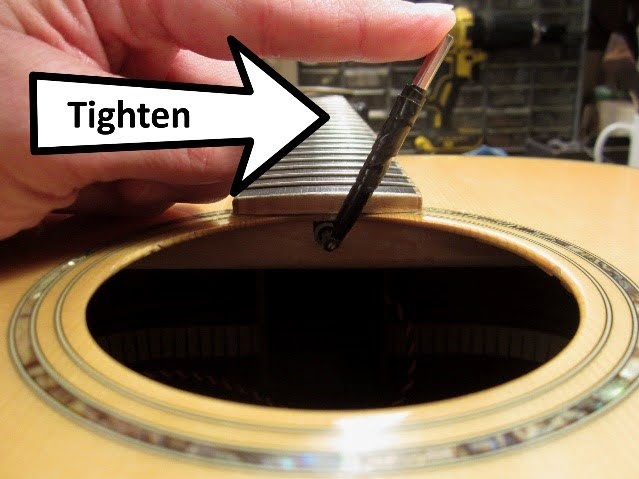
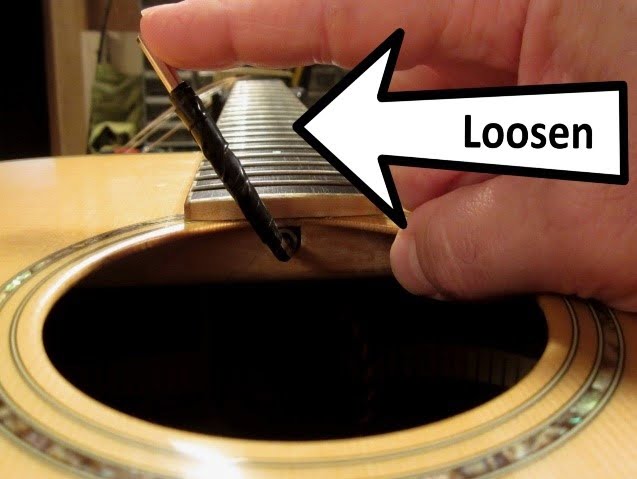




I have a cheap Carlo Robellii acoustic electric that I’m trying to set up. I have turned the torsion bar as far left as it will go without forcing and the strings are still way too high. Shall I continue to the next setup step?
Hi Robert, Yes the next step would be to lower the strings at the saddle – however, I would suggest measuring how much relief is in the neck first, so that you can verify that it isn’t warped or stuck in a forward bow. If you lower the strings at the saddle next and still find the action too high – you will want to also look at the neck angle. Hope this helps – let me know if you have any other questions. Cheers!
Truss rod adjusting is NOT for string action (string height). It’s only for relief. There should be a tiny gap between fret and string in the center of the board when you pres down a string at 1st and last fret (where neck meets body).
Set your relief, and then look into string action (string height when playing) by adjusting the height of the saddle. If for some (not very likely) reason this still does not get your strings where you want them, you might possibly want to shim your neck to change the neck angle.
If you turned your truss rod “as far left as it will go” by mistake, since you thought it’s for string height, it’s possible the neck now has a massive bow, so you want to re-adjust it for the correct relief.